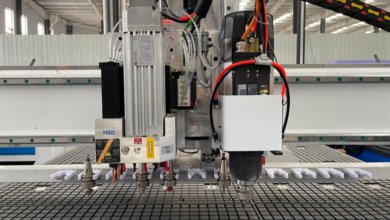A Closer Look at Document Processing Solutions in the Enterprise

Enterprises worldwide are undergoing a digital transformation—part of which involves replacing slow, manual document workflows with modern Intelligent Document Processing (IDP) platforms. Among early leaders, Ephesoft championed intelligent capture with template-based OCR and machine learning. However, as document types diversify and integration needs grow, businesses are increasingly seeking Ephesoft alternatives that deliver greater flexibility, speed, and usability.
Why Ephesoft Became an Enterprise Staple
Ephesoft Transact became a go-to for enterprises by bridging the gap between rigid OCR and enterprise content needs. Its rule-based capture, document classification, and template-driven extraction empowered large accounts payable, HR, and finance teams to automate workloads without heavy customization. Deep integrations with ERP systems like SAP and NetSuite made it a turnkey solution for document transformations at scale.
In addition, Ephesoft supports hybrid capture—ingesting content from scanners, emails, or mobile uploads—and applies validation logic using JavaScript or Python scripting. This design enables users to embed compliance checks and routing conditions within extraction flows. While its user community appreciates the high accuracy in structured document volumes, most teams acknowledge that platform updates require some technical effort.
However, as documents became more varied and dynamic, maintaining template libraries for each variation became taxing. Enterprises noticed their automation ceilings were being reached—OCR templates need constant revisions, slowing progress. The staff time required to update template definitions could erode automation efficiency gains, especially for processes with periodically changing form formats.
Key Criteria When Evaluating IDP Platforms
Document processing needs today span both regulated compliance and business intelligence. While accuracy still matters, platforms must handle evolving documents and adapt swiftly. Ease-of-use is a game-changer: a platform may offer enterprise grade functionality, but if provisioning rules requires technical specialists, project timelines stretch.
Lifecycle management is another critical factor. Businesses need tools that offer feedback-driven model updates, sandbox testing environments, and visibility into document confidence scoring. Enterprise governance expects audit logs, role-based access, and metadata tagging. Platforms without self-service dashboards often end up relegated to back-office IT teams.
Finally, adoption depends heavily on integration ecosystems. Integrations with ERP, CRM, RPA systems, analytics tools, and workflow engines ensure that extracted data accelerates business decisions. Without these capabilities, data captured becomes siloed, its value unrealized. Modern tools must support both low-code and API-first approaches in order to align with enterprise software roadmaps.
Leading Ephesoft Alternatives: Strengths and Trade-offs
ABBYY Vantage builds on template-free data extraction with AI-driven “Skills” for common use cases—document models that remove configuration pain. It appeals to teams that want accuracy akin to Egyptians but need broader modelable document pipelines. Its cognitive skills can be combined with workflows via REST APIs, though fine-tuning might still require support.
Amazon Textract offers elastic document processing within the AWS ecosystem. With pay-as-you-go pricing, it suits those who prefer engineering-led deployments and robust scalability. However, it lacks higher-level features like automated model learning or validation UIs, so many engineering teams wrap Textract in business layers to access enterprise features.
Nanonets, Veryfi, Klippa offer lightweight onboarding with strong document-specific models, plus simple APIs. They appeal to teams needing focused extraction—receipts, remittances, vendor invoices—with minimal friction. While their scope is limited, they often deliver impressive precision in their verticals, and their domain-specific data services can be wrapped into custom automation.
Tungsten & Laserfiche combine IDP with enterprise-grade BPM and content management. Tungsten emphasizes user self-service, while Laserfiche adds full ECM and compliance layers. They are best suited for workflows requiring multi-stage processing—from document ingestion to contract execution and lifecycle tracking.
Comparing Template-Based vs. Template-Free AI
Template-based IDP systems are still relevant when businesses process millions of identical form types. They offer tight control over what gets extracted and how errors are handled. But the cost comes in ongoing template upkeep and custom scripting to support new layouts.
On the other hand, template-free AI platforms—like ABBYY, Docsumo, and Rossum—leverage machine learning and layout-agnostic features. They detect labeled fields, tables, and handwritten text without needing explicit definitions. This dramatically reduces onboarding time and administrative burden, at the cost of potentially lower accuracy on exotic document types.
There is a growing hybrid model trend: platforms that combine template-free core extraction with optional rule-based overrides. These systems offer both flexibility and precision—allowing customization for critical fields while letting AI generalize across the rest.
Pricing Models, Scalability & Ease-of-Use
As teams build pipelines to support departments from procurement to legal, licensing costs and automation scale become pivotal. Many platforms still use per-page or per-endpoint pricing, which can spike quickly if automation grows unexpectedly.
Docsumo stands out for predictable, bundled pricing. A single per-page rate includes feature sets like audit logs, user management, and workflow logic. There’s no jumping between tiers as volume increases—a significant advantage for growing organizations.
Ease-of-use reduces overhead. Training budgets shrink when users can build document workflows in hours rather than weeks. For finance and operations teams, platforms with no-code validation and document labeling functionality dramatically lower the barrier to implementation—and increase automation adoption.
User Experience & Implementation Speed
While long vendor processes might yield more polished features, the rising demand for agility makes quick deployment a priority. Many IDP buyers now favor minimal onboarding timelines that don’t require months of IT support.
Platforms like Docsumo support fully-managed trials, self-hosted document testing, and immediate label-export functionality—getting business users to ROI in days. Iterative deployment lets teams start with simple extraction tasks and ramp up to complex workflows over time. No-code platforms reduce change resistance, since administrators don’t need to involve IT at every turn.
Even advanced use cases—like multi-page contract processing with conditional routing—can be achieved without scripting, thanks to drag-and-drop workflow editors. This empowers teams to iterate quickly, collect feedback, and continuously improve.
Emerging IDP Trends & What to Watch
- Semantic Understanding & GenAI Assistants
AI tools now summarize contracts, analyze obligations, extract clauses—going beyond structured data into meaning. Semantic understanding overlays extraction, enabling example-based validation and richer insights. This allows IDP platforms to drive smarter decisions from raw documents.
- Pre-Built Industry Skill Marketplaces
Platform “Skill Stores” allow customers to acquire domain-specific extraction models (e.g., lab reports, insurance forms, shipping labels). This increases automation readiness and lowers adoption barriers—even for teams without in-house training datasets.
- Document Automation Embedded in Workflows
IDP – Extract – Act becomes automated through RPA chaining and orchestration. Platforms are extending their ecosystem reach via plug-and-play connectors and low-code reliability integration—bringing document pipelines inline with the digital enterprise.
Hybrid IDP Architectures in Practice
Enterprises are now adopting layered IDP stacks that harness best-in-class tools—each serving a different part of the document pipeline:
Finance systems rely on template precision (ABBYY, Infrrd-like models) embedded in LOS systems, while legal teams may employ Docsumo to extract terms across contracts. Logistics and procurement departments could route bills of lading through Docsumo-based workflows that feed data into TMS systems automatically.
Underpinning these diverse systems is a central orchestration layer (e.g., UiPath, Logic Apps) that ensures extracted data is routed, reconciled, and audited. This composable model elevates flexibility while preserving specialized automation.
The key benefits of hybrid architectures include faster onboarding for new document types, granular license spend allocation, and improved ownership across departments. They do have overhead in terms of integrations, monitoring, and governance—but frameworks and orchestration platforms are rapidly maturing to simplify this.
Explainability, Compliance & Trust in AI-Driven IDP
In regulated environments—healthcare reimbursement, contract review, insurance claims—visibility into extraction logic is non-negotiable. Audit trails, confidence indicators, change logs, and human review details must be transparent for compliance purposes.
Explainable models build user trust: when employees see why a field was captured and what caused an exception, adoption increases. Extraction feedback loops also enhance model training—raising automation accuracy.
Docsumo excels here, providing robust auditability and field-level tracking. Administrators and legal teams can review extraction history, support compliance audits, and deploy versioned models confidently. This builds visibility and trust in the IDP layer.
Docsumo: A Modern Enterprise-Ready IDP
Throughout the IDP landscape, Docsumo stands out as a powerful, scalable, and user-friendly ephesoft alternative:
- Template-Free AI Extraction: Handles structured and unstructured documents—contracts, legal filings, invoices, health forms—without manual templates.
- Pre-Trained Industry Models: Finance, logistics, healthcare, legal—Docsumo adapts quickly to new document types.
- Human-in-the-Loop Training: Human corrections continuously improve AI accuracy.
- No-Code Workflow Engine: Build document validation, routing, data exports—all without scripting.
- Enterprise Governance: SOC 2 Type II, GDPR-ready, role-based access, audit trails.
- Rapid Deployment & Predictable Cost: Setup in days, scalable pricing (~$0.30/page).
Docsumo’s flexibility, compliance, and human-centric design enable enterprises to automate end-to-end document processes efficiently—without the friction of traditional capture systems.
Conclusion
Document processing solutions have matured far beyond OCR—now offering intelligent, explainable workflows, integrated dashboards, and near-real-time automation. Ephesoft built the foundation, but changing demands—layout variance, compliance, scalability—have driven interest in ephesoft alternatives offering flexibility, ease-of-use, and business-centered design.
For teams requiring broad coverage, compliance, and scalable deployment, Docsumo offers a compelling path forward. Its blend of enterprise-grade features and user-centric workflows makes it a modern IDP choice that bridges the gap between structured capture platforms and next-gen intelligent automation.




